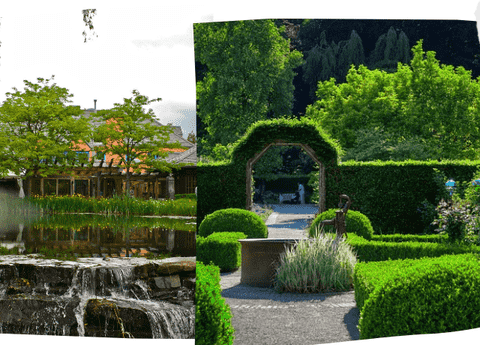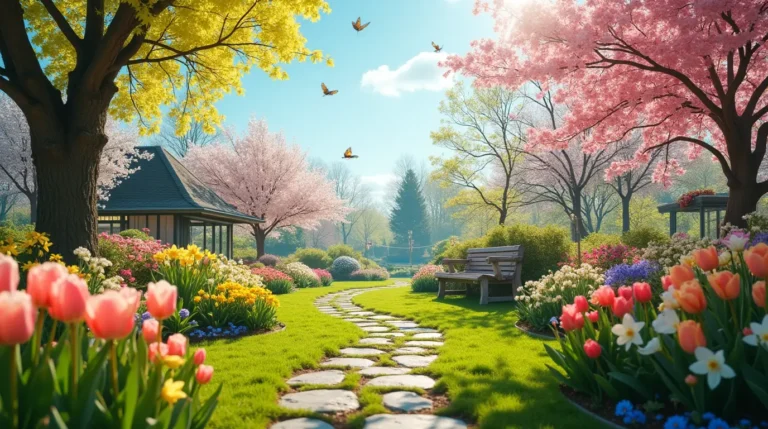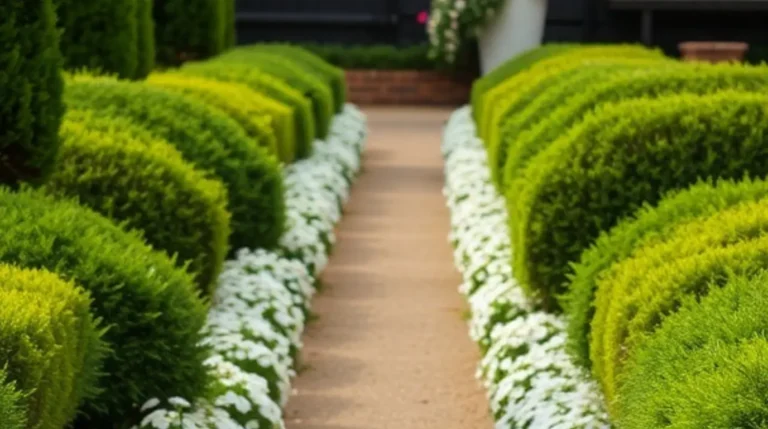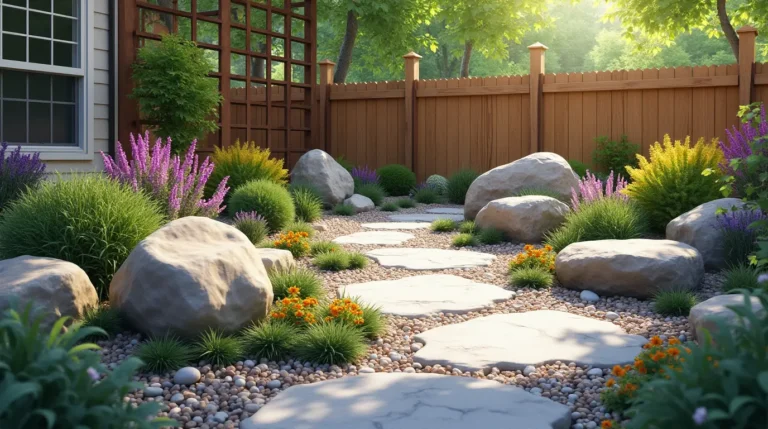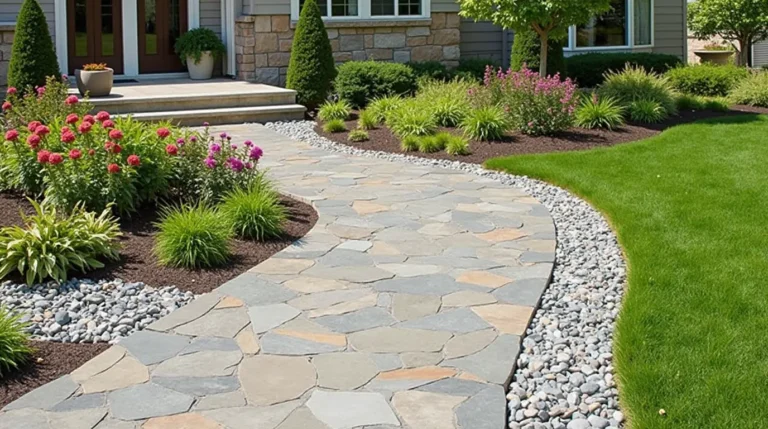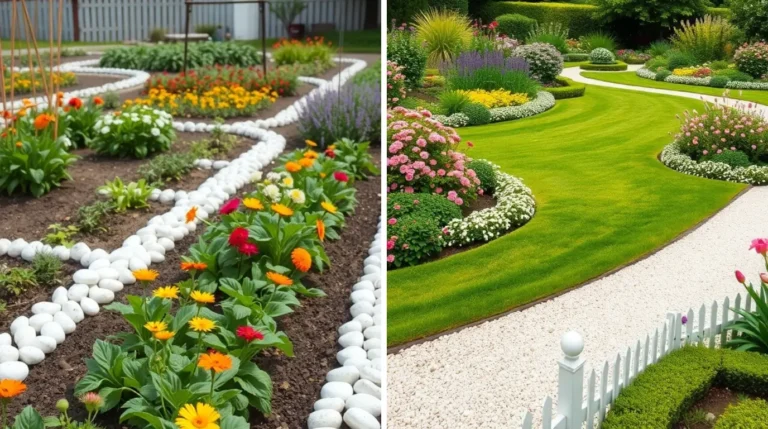The Ultimate Guide to Easy Landscaping Ideas for Every Homeowner
Table of Contents
Transforming your outdoor space can elevate the aesthetic appeal and value of your property, making it a delightful retreat for relaxation and entertainment. Whether you’re a seasoned gardener or a complete novice, there are countless easy landscaping ideas that can help you create a stunning environment without overwhelming effort or expense. In this guide, we will explore practical landscaping tips, innovative gardening tricks, and DIY landscaping strategies that are perfect for any homeowner. Get ready to unlock the potential of your yard with simple yet effective home gardening techniques that promise to inspire and empower you.
Simple Landscaping Tips for Beginners

Start with a Plan
Before diving into any landscaping project, it’s crucial to start with a plan. Assess your yard and identify key areas you want to focus on. Think about how you use the space—do you need a play area for kids, a quiet spot for relaxation, or a garden for growing vegetables? Sketch out a rough design to visualize where different elements will go. This will help you stay organized and ensure you don’t overlook any details. Additionally, having a plan can prevent costly mistakes and make the process more efficient. Consider creating a budget to keep track of expenses and prioritize the most important aspects of your project. By starting with a clear plan, you set yourself up for a successful and stress-free landscaping experience.
Choose Low-Maintenance Plants
Selecting low-maintenance plants is key to creating an easy-to-care-for landscape. Choose native plants that are naturally suited to your local climate and soil conditions. These plants generally need less water, fertilizer, and maintenance. Perennials are a great option as they return year after year, reducing the need for replanting. Consider hardy shrubs, ornamental grasses, and ground covers that can thrive with minimal attention. Additionally, drought-tolerant plants like succulents and cacti can add unique textures and colors to your garden while conserving water. Grouping plants with similar water and sunlight needs together can further simplify maintenance. This approach not only saves time and effort but also ensures a healthier, more resilient garden. By choosing low-maintenance plants, you can enjoy a beautiful and sustainable landscape with minimal effort.
Incorporate Mulch for Easy Care
Mulch is an invaluable tool for any beginner landscaper aiming for a beautiful yet low-maintenance garden. By spreading a layer of mulch around your plants, you can significantly reduce the need for frequent watering and weeding. Mulch helps retain moisture in the soil, keeping your plants hydrated longer and reducing evaporation, especially during hot weather. It also acts as a barrier against weeds, preventing them from taking root and competing with your plants for nutrients. Organic mulches, such as wood chips, bark, or straw, can even improve soil health as they decompose, adding essential nutrients back into the ground. Additionally, mulch gives your garden a polished, cohesive look that enhances its overall aesthetic appeal. By incorporating mulch, you create a more sustainable and manageable landscape, allowing you to spend less time on upkeep and more time enjoying your outdoor space.
DIY Landscaping Projects

Create a Garden Path
Creating a garden path is a fantastic DIY landscaping project that can add both functionality and charm to your outdoor space. Start by selecting a suitable location for your path, considering how it will connect different areas of your garden. Materials like gravel, stepping stones, or bricks are excellent choices for a simple yet effective garden path. Begin by outlining the path with stakes and string to define its shape. Then, remove any grass or weeds within the outlined area and level the ground. Lay down a weed barrier to prevent unwanted growth, and add a layer of sand or crushed stone as a base. Finally, arrange your chosen materials on top, ensuring they are evenly spaced and stable. This project not only enhances the aesthetic appeal of your garden but also provides a practical solution for navigating your yard without trampling your plants.
Build Raised Garden Beds
Building raised garden beds is an excellent DIY landscaping project that makes gardening more accessible and manageable. Raised beds offer several benefits, including improved soil drainage, better control over soil quality, and reduced weed growth. To get started, choose a sunny location and determine the size and shape of your beds. Common materials for constructing raised beds include untreated wood, bricks, or even recycled materials. Assemble your chosen materials into a box-like structure, ensuring it’s sturdy and level. Fill the bed with a mix of high-quality soil and compost to provide a nutrient-rich environment for your plants. Raised garden beds are particularly advantageous for growing vegetables and herbs, as they create an ideal growing environment with minimal effort. They also make it easier to manage your garden, especially for those with limited mobility. By building raised garden beds, you can enjoy a productive and aesthetically pleasing garden with less maintenance.
Install a Water Feature
Installing a water feature can transform your garden into a serene and inviting space. Water features, such as fountains, ponds, or small waterfalls, add a soothing element to your landscape, promoting relaxation and tranquility. To start, choose a location that complements your garden’s layout and ensures easy access to power if needed. Pre-made water feature kits are widely available and simplify the installation process. If you’re feeling more adventurous, you can create a custom water feature using materials like rocks, a submersible pump, and a waterproof liner. Dig a hole to accommodate your design, then install the pump and lay the liner. Arrange the rocks or other materials to create a natural look, and fill the feature with water. Regular upkeep, like cleaning the pump and clearing debris, will keep your water feature in optimal condition. Adding a water feature enhances the aesthetic appeal of your garden while providing a peaceful retreat for you to enjoy.
Home Gardening Essentials

Essential Tools for Every Gardener
Using the right tools can greatly improve your gardening experience. Essential tools for every gardener should include a sturdy pair of gloves to protect your hands from thorns and rough surfaces. A hand trowel is essential for planting and transplanting small plants. Pruners are necessary for trimming and shaping plants, while a garden fork can help loosen soil and remove weeds. A watering can or a garden hose with an adjustable nozzle is crucial for keeping your plants well-hydrated. Additionally, a wheelbarrow can assist in transporting soil, plants, and other materials around your garden with ease. For larger tasks, a spade and a rake are useful for digging and leveling soil. Investing in high-quality tools can save you time and effort, making your gardening endeavors more enjoyable and productive. By having these essential tools on hand, you can tackle any gardening project with confidence.
Soil Preparation and Maintenance
Proper soil preparation and maintenance are crucial for the success of your garden. Start by testing your soil to evaluate its pH level and nutrient content. This will help you determine which amendments are necessary for creating optimal growing conditions. Adding compost or organic matter can improve soil structure, enhance drainage, and provide essential nutrients. It’s important to till the soil to break up compacted areas and mix in any added materials evenly. Mulching is another effective practice for maintaining soil health; it helps retain moisture, regulate soil temperature, and suppress weeds. Regularly check the soil’s moisture levels and adjust your watering routine as needed to prevent overwatering or drought stress. Periodically add organic matter to replenish nutrients and maintain soil fertility. By focusing on soil preparation and maintenance, you create a strong foundation for your plants, ensuring they thrive throughout the growing season.
Seasonal Planting Guide
Understanding the best times to plant different types of vegetation is key to a successful garden. A seasonal planting guide can help you plan your gardening activities year-round. In spring, focus on planting cool-season crops like lettuce, peas, and spinach as soon as the soil is workable. This is also an ideal time to plant perennials and shrubs. Summer is ideal for warm-season crops such as tomatoes, cucumbers, and beans, as well as annual flowers like marigolds and zinnias. Fall offers another opportunity to plant cool-season crops and is a great time to add bulbs for spring blooms. Winter is a time for garden maintenance, soil preparation, and planning for the upcoming year. By following a seasonal planting guide, you can ensure that your garden remains productive and vibrant throughout all four seasons. This approach allows you to maximize your gardening efforts and enjoy a continuous harvest.
throughout the year

